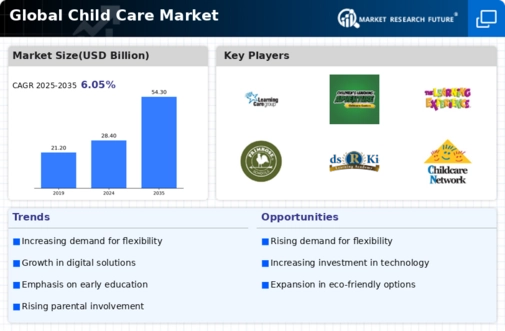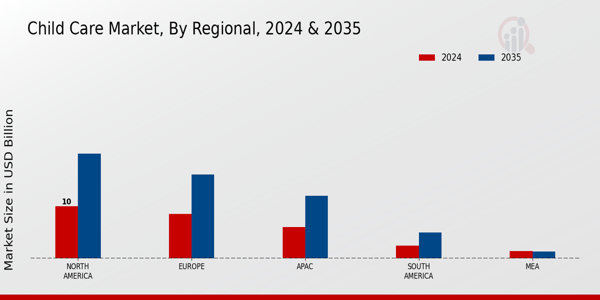Market Analysis
In-depth Analysis of Child Care Market Industry Landscape
The child care market is subject to dynamic changes influenced by societal shifts, economic factors, and evolving family structures. In recent years, there has been a noticeable increase in the demand for child care services due to the rise in dual-income households and the growing recognition of the importance of early childhood education. This demand has led to a variety of child care options, including daycare centers, in-home care, and preschool programs, to cater to the diverse needs of parents and guardians.
Economic conditions play a pivotal role in shaping the dynamics of the child care market. During periods of economic growth, there is often an uptick in the number of working parents, leading to an increased demand for child care services. Conversely, economic downturns may result in cost-conscious decisions, with some families opting for more affordable care options or relying on informal networks for child care. Child care providers must adapt to these economic fluctuations by offering flexible pricing models and quality services that align with varying financial capacities.
Government policies and regulations also significantly impact the child care market dynamics. Changes in legislation related to licensing requirements, safety standards, and subsidies can influence the accessibility and affordability of child care services. Additionally, government initiatives to improve early childhood education and make child care more accessible for low-income families contribute to the market dynamics, shaping the landscape for both public and private providers.
Consumer preferences and expectations have evolved in the child care market, emphasizing not only safety and supervision but also educational components. Parents are increasingly seeking child care options that provide a structured learning environment, fostering early childhood development. This shift has led to the integration of educational curricula in daycare centers and preschool programs, aligning child care services with the broader goal of preparing children for formal education.
Technology has also begun to play a role in shaping the dynamics of the child care market. Parents now expect real-time updates and communication about their child's well-being and activities through digital platforms. Child care providers are incorporating technology to streamline administrative tasks, enhance communication, and improve the overall experience for both parents and children.
Cultural shifts and changing family structures contribute to the evolving dynamics of the child care market. The increasing prevalence of remote work and flexible schedules has led to a demand for more flexible child care arrangements. Providers are adapting by offering part-time options, extended hours, and remote learning support to accommodate the changing needs of modern families.
The ongoing global pandemic has brought about unprecedented challenges and opportunities in the child care market. The need for health and safety measures has become paramount, influencing parents' decisions on child care options. Providers have had to implement rigorous sanitation protocols and adapt their services to address concerns related to the ongoing public health crisis.










Leave a Comment